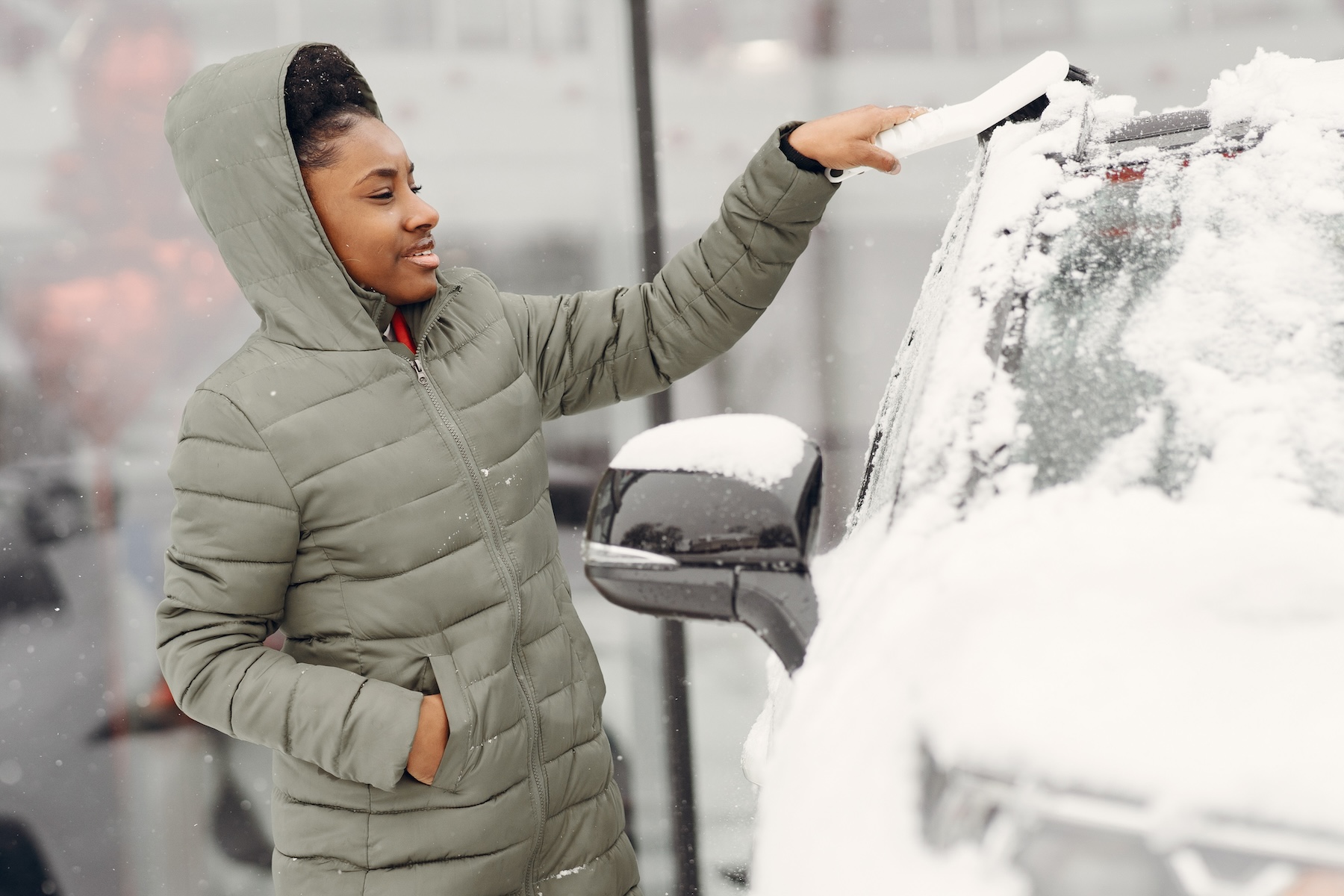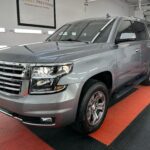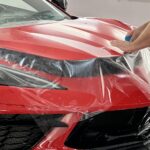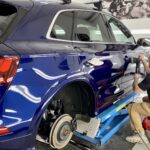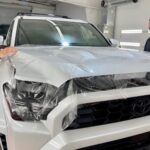As the temperature starts to drop and winter weather looms, many car owners focus on preparing their vehicles mechanically for the cold months ahead. While oil changes and tire checks are essential, one often-overlooked aspect of vehicle maintenance is protecting your car’s exterior from the harsh winter elements. The combination of snow, ice, road salt, and grit can wreak havoc on your car’s paint, leading to chips, scratches, and corrosion.
Paint Protection Film (PPF) and ceramic coating are two powerful solutions that not only protect your car during winter but also keep it looking like new all year long. Here’s why these protective layers are crucial for your vehicle this winter and beyond.
The Harsh Realities of Winter on Your Vehicle’s Exterior
Winter is tough on vehicles, and your car’s exterior is no exception. Road salt is one of the biggest culprits behind paint damage. Though it’s necessary to prevent icy roads, the chemicals in road salt can cause significant corrosion and rust. Once the salt mixes with water and adheres to your car, it quickly eats away at unprotected surfaces, leaving your paint vulnerable to damage.
Snow and ice also pose threats, especially when they freeze on your vehicle’s surface. When scraping snow and ice off your car, it’s easy to scratch the paint, especially if there’s dirt or grit mixed in. Add in the constant temperature fluctuations, and your car’s paint can become brittle, leading to cracks and chips.
This is where PPF and ceramic coating come to the rescue.
Paint Protection Film: The Invisible Shield Your Car Needs
Paint Protection Film (PPF), often referred to as a “clear bra,” is a transparent, durable film applied to the exterior of your car. It’s designed to absorb impacts, resist chemicals, and provide a sacrificial layer between your car’s paint and the elements.
Here’s why PPF is a game-changer for winter protection:
- Prevents Road Salt Damage
The thick, urethane film of PPF blocks salt from reaching the paint, preventing corrosion and rust. Even when the salt is mixed with water, the film prevents it from sticking to the car’s surface. - Scratch and Chip Resistance
Snow removal can easily scratch your vehicle, but PPF helps absorb and resist damage from shovels, ice scrapers, and grit. It also protects your car from rock chips, debris, and minor abrasions from daily driving. - Self-Healing Properties
Some types of PPF come with self-healing technology. This means that small scratches and scuffs automatically disappear when exposed to heat, keeping your car looking pristine even after harsh conditions. - UV and Chemical Protection
PPF also offers protection from UV rays and harsh chemicals that are common in de-icing agents and other winter road treatments.
In short, PPF acts as a protective, invisible armor for your vehicle, ensuring that your car stays free of winter’s most damaging elements.
Ceramic Coating: The Ultimate Paint Sealant
Ceramic coating is a liquid polymer that chemically bonds with your vehicle’s paint, creating a long-lasting protective layer. It’s not a replacement for PPF, but when used together, they create a robust defense against the harshest winter conditions.
Here’s why ceramic coating is essential for winter:
- Hydrophobic Properties
Ceramic coatings are highly hydrophobic, meaning they repel water and other liquids. Snow, slush, and water beads up and rolls off the surface, reducing the chance of contaminants clinging to your vehicle. This makes it easier to wash away harmful salt and dirt. - Easy Cleaning
One of the standout benefits of ceramic coating is its slick surface. It makes it harder for dirt, road grime, and salt to adhere to your vehicle. This means less frequent and easier cleaning, which is especially beneficial when water freezes in colder temperatures. - UV Protection and Paint Preservation
The sun may not feel as intense during winter, but UV rays can still damage your car’s paint. Ceramic coating blocks these rays, preserving the color and shine of your car’s exterior, even during those sunny winter days. - Long-Lasting Gloss
One of the top reasons car owners love ceramic coating is the incredible shine it provides. Even in the depths of winter, your car can maintain a high-gloss, showroom-like finish, ensuring it looks its best all year round.
The Perfect Combo: PPF and Ceramic Coating for Ultimate Winter Protection
While both PPF and ceramic coating offer incredible protection, using them together creates a nearly impenetrable defense for your car’s exterior. PPF shields against physical damage like scratches and chips, while ceramic coating adds a sleek, water-repellent barrier that makes cleaning easier and protects against chemical and UV damage.
This dynamic duo ensures that your car can withstand winter’s harshest elements without sacrificing its looks. By applying PPF to the high-impact areas of your car (such as the hood, bumper, and fenders) and ceramic coating to the entire vehicle, you’re giving your car the ultimate protection it deserves.
Additional Tips to Protect Your Vehicle During Winter
In addition to investing in PPF and ceramic coating, there are a few more steps you can take to winter-proof your ride:
- Frequent Washing: Regularly wash your car during winter to remove salt, grime, and debris before they have a chance to cause damage.
- Waxing: Apply a winter wax to give your vehicle another layer of protection, especially for areas not covered by PPF or ceramic coating.
- Garage Parking: If possible, park your vehicle in a garage or under cover to protect it from snow, ice, and road salt.
Conclusion: Be Proactive with Winter Protection
Winter can be brutal on your car’s paint, but by taking a proactive approach and investing in Paint Protection Film and ceramic coating, you can prevent costly damage and maintain your vehicle’s appearance year-round. With the combination of PPF’s physical barrier and ceramic coating’s hydrophobic and UV-resistant properties, your car will be well-protected against whatever winter throws at it.

